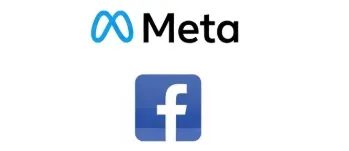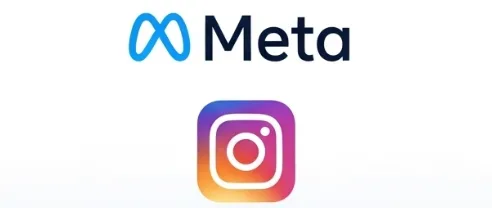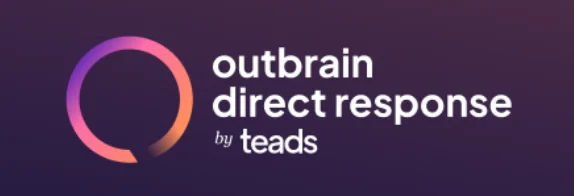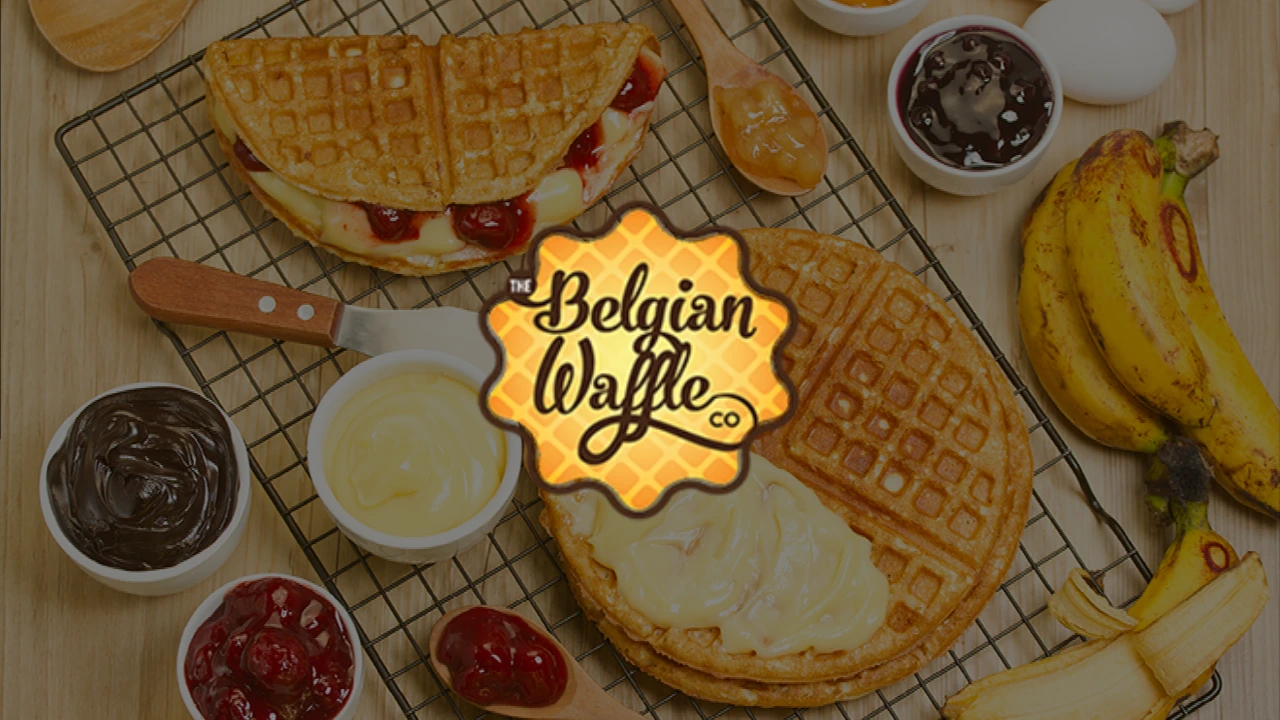If you’ve ever clicked on a sponsored link at the top of Google or seen an ad pop up between Instagram stories, you’ve interacted with PPC, Pay-Per-Click, advertising. It’s one of the fastest ways for businesses to get in front of the right people at the right time. And it’s not just about visibility, PPC visitors are around 50% more likely to make a purchase than those who arrive organically, which makes this form of advertising incredibly powerful.
On top of that, brands typically earn double their ad spend, especially on platforms like Google Ads. That means for every ₹100 you spend, you’re likely bringing back ₹200 in revenue. With numbers like that, it’s no wonder businesses from startups to giants are investing more into PPC in 2025 than ever before.
But here’s the real question: which PPC platform is right for you? In this guide, we’ll break down the best PPC advertising platforms available, what makes each unique, and how to pick the one that fits your goals, audience, and budget.
How Does PPC Advertising Work?
PPC advertising works on a bidding model, where advertisers bid for keywords or placements to show their ads. When a user searches or browses content relevant to those keywords, the platform runs an auction to decide which ad to display. The advertiser is charged only when someone clicks the ad, hence, Pay-Per-Click.
There are two main types:
- Search Ads, which appear in search engine results (e.g., Google)
- Display Ads, which show on websites, apps, or social platforms
This model helps brands get visibility, leads, and conversions efficiently by targeting users based on intent, interests, or behavior.
Best PPC Advertising Platforms
1. Google Ads

Website: https://ads.google.com
Google Ads is the most widely used PPC advertising platform, allowing businesses to reach potential customers through Google Search, YouTube, and the Display Network. With billions of daily searches, it offers unmatched keyword targeting for advertisers to show ads based on user intent.
It supports various campaign types including search, display, shopping, and video, making it versatile for different goals. The platform also uses machine learning to optimize bids and improve ROI automatically. Small businesses, eCommerce stores, and large enterprises all rely on Google Ads to generate leads, increase sales, and build brand visibility. you can also moniter your brand with the help of Google Analytics, Google Search Console, and Google Trends
Features:
- Search, Display, Video, and Shopping campaigns
- AI-driven smart bidding and performance suggestions
- Keyword, device, geo, and audience targeting
- Real-time conversion tracking and analytics
- Google Analytics integration
Best For:
- Businesses seeking high-intent traffic
- Performance marketing
Ease of Use:
- Moderate learning curve
- Powerful features with setup complexity
2. Facebook Ads (Meta Ads)

Website: https://www.facebook.com/business/ads
Facebook Ads lets advertisers reach billions of users across Facebook, Instagram, and Messenger with personalized and visual content. It offers extremely precise targeting options based on demographics, interests, behaviors, and online activity. Whether promoting an eCommerce product, generating app installs, or building a community, the platform supports a wide range of objectives.
With flexible ad formats like carousel, stories, and reels, brands can run mobile-friendly, visual-first campaigns. It also features budget optimization and automation tools to help businesses scale performance efficiently. You can also use tools for facebook ads to make your work easier.
Features:
- Hyper-detailed audience targeting
- Multiple ad placements (Feeds, Stories, Reels)
- Lookalike audiences and retargeting
- Instagram ad integration
- Campaign budget optimization
Best For:
- Visual-first brands
- Local services
- Mobile-centric campaigns
Ease of Use:
- User-friendly interface
- Automated recommendations
3. Microsoft Advertising (Bing Ads)

Website: https://ads.microsoft.com
Businesses can display search ads on the Bing, Yahoo, and AOL networks with Microsoft Advertising, formerly known as Bing Ads.. While Bing’s market share is smaller than Google’s, it offers a less competitive and often more affordable advertising environment.
It appeals especially to older, high-income demographics and desktop users in the U.S. The platform supports keyword targeting, device bidding, and ad extensions much like Google Ads. With easy import options from Google, it’s a solid secondary channel for expanding search campaigns.
Features:
- Search and audience-based ad formats
- LinkedIn profile targeting (exclusive feature)
- Easy import from Google Ads campaigns
- Ad scheduling and bidding strategies
- Conversion tracking tools
Best For:
- Brands targeting U.S. desktop users
- Professional and older audiences
Ease of Use:
- Intuitive for Google Ads users
- Moderate setup experience
4. LinkedIn Ads

Website: https://www.linkedin.com/ads
LinkedIn Ads is the go-to platform for B2B PPC advertising, allowing businesses to target professionals by job title, company size, industry, and seniority. It is ideal for SaaS companies, recruiters, and enterprise-level services looking to connect with decision-makers.
The platform offers multiple ad types like sponsored content, message ads, and text ads. While the cost-per-click is usually higher, the lead quality tends to be significantly better for B2B objectives. It’s a reliable platform for generating qualified leads and building brand authority in niche industries.
Features:
- B2B-focused targeting (job role, skills, company, etc.)
- Sponsored InMail and lead gen forms
- Matched and lookalike audiences
- Conversion tracking and audience insights
- Integration with HubSpot, Salesforce, and others
Best For:
- B2B marketers
- SaaS companies
- Professional services
Ease of Use:
- Moderate to advanced
- Higher CPC with refined targeting
5. Twitter Ads (X Ads)

Website: https://ads.twitter.com
Twitter Ads now rebranded as X Ads, lets advertisers connect with real-time conversations and trending topics. It’s ideal for promoting time-sensitive offers, event coverage, and branded content. Targeting includes interest, follower lookalikes, and keyword-level customization. Ads can appear in user timelines, trends, and search results.
While Twitter’s ad tools aren’t as deep as Google or Meta, they’re effective for awareness and engagement. It works well for media companies, tech brands, and startups looking to join public conversations.
Features:
- Promoted Tweets and accounts
- Hashtag and trend targeting
- Video and conversation card formats
- Audience lookalikes and keyword targeting
- Campaign-level budget and bid control
Best For:
- Event marketing
- Tech campaigns
- Trend-based content
Ease of Use:
- Fast setup
- Simple objective selections
6. Instagram Ads

Website: https://business.instagram.com/advertising
Instagram Ads, run through Meta’s ad platform, is perfect for visually rich campaigns targeting younger and mobile-first audiences. Ads appear in users’ feeds, stories, reels, and explore tabs, blending naturally into native content. With the same powerful targeting engine as Facebook, Instagram enables advertisers to reach precise audience segments.
It supports shoppable posts, influencer partnerships, and branded content for eCommerce, lifestyle, and fashion industries. The visual storytelling format makes it a top pick for direct-to-consumer brands.
Features:
- Feed, Stories, Reels, and Explore placements
- Visual-first ad formats (carousel, video, shopping)
- Instagram Shops integration
- Influencer and branded content support
- CTA buttons and landing page options
Best For:
- Fashion and beauty brands
- Food and lifestyle businesses
- Direct-to-consumer (DTC) brands
Ease of Use:
- Beginner-friendly
- Uses Meta’s intuitive ad system
7. YouTube Ads

Website: https://ads.youtube.com
YouTube Ads help brands reach billions of viewers through engaging video content. Run via Google Ads, it offers precise targeting based on user behavior, demographics, and even search history. Video discovery units, bumper advertising, and in-stream ads that can be skipped or not are examples of ad formats.
YouTube works well for both brand awareness and conversion-focused campaigns. With increasing video consumption, especially on mobile, it offers massive potential for storytelling and product demonstrations.
Features:
- In-stream, bumper, and discovery ad formats
- Target by interest, channel, topic, or search behavior
- Skippable and non-skippable ads
- Brand lift and conversion tracking
- Integration with Google Ads dashboard
Best For:
- Brands with video content
- Storytelling and educational campaigns
Ease of Use:
- Moderate setup
- Managed through Google Ads interface
8. Amazon Ads

Website: https://advertising.amazon.com
Amazon Ads is a must-use PPC platform for eCommerce brands selling on Amazon. It allows sellers to promote their products directly on Amazon’s search results, product pages, and other placements within its ecosystem. With high-intent buyers already in a shopping mindset, Amazon Ads often yields high conversion rates.
Businesses can display listings above rivals with Sponsored Product and Sponsored Brand campaigns. Advanced reporting tools help sellers measure ROI, optimize bids, and manage ad spend effectively within the Amazon interface.
Features:
- Sponsored Products, Brands, and Display ads
- Keyword and product targeting
- Amazon DSP for programmatic advertising
- Sales attribution and campaign analytics
- Native integration for Amazon sellers
Best For:
- Amazon sellers
- DTC eCommerce brands
Ease of Use:
- Moderate knowledge required
- Tailored for sellers
9. TikTok Ads

Website: https://ads.tiktok.com
TikTok Ads gives brands access to one of the most engaged Gen Z and millennial audiences online. With short-form video formats and viral trends, the platform supports creative storytelling through in-feed, TopView, and branded challenge campaigns.
TikTok’s algorithm helps even small budgets go viral with the right creativity. The ad dashboard includes audience targeting, budget controls, and pixel tracking. It’s highly visual, mobile-first, and ideal for building brand affinity through fun, authentic content.
Features:
- In-feed video, TopView, and branded challenges
- Custom audience and interest targeting
- TikTok Pixel for event tracking
- Creator Marketplace for influencer partnerships
- Real-time analytics and trend insights
Best For:
- Gen Z-focused brands
- Fashion and beauty products
- Entertainment campaigns
Ease of Use:
- Easy to moderate
- Visual storytelling skills required
10. Pinterest Ads

Website: https://ads.pinterest.com
Pinterest Ads allows brands to promote products and ideas through pins that appear organically in user feeds and searches. It’s an excellent platform for driving traffic and inspiration-based purchases.
Popular with home décor, fashion, and wellness audiences, Pinterest offers visual search targeting and shopping integration. Ad formats include promoted pins, carousels, and idea pins. It also integrates with eCommerce platforms for seamless product listings and retargeting.
Features:
- Promoted Pins, carousels, and video formats
- Shopping integration and product tagging
- Interest and keyword-based targeting
- Visual search and audience insights
- Conversion tracking and catalogs
Best For:
- DIY, lifestyle, and fashion brands
- Home décor and wellness businesses
Ease of Use:
- Easy interface
- Ready-to-use templates
11. AdRoll

Website: https://www.adroll.com
AdRoll is a PPC and retargeting platform designed for DTC brands looking to advertise across the web and social media. It simplifies omnichannel campaigns by managing ads across Facebook, Instagram, Google, and the open web from a single dashboard.
Its machine learning engine optimizes bidding and audience segmentation for higher returns. AdRoll also includes email marketing and customer journey automation features, making it a powerful choice for brands wanting to unify their marketing channels.
Features:
- Cross-channel campaign management
- Dynamic product retargeting
- Email + ad integration
- Behavioral audience segmentation
- Conversion tracking and ROAS insights
Best For:
- DTC brands
- Omnichannel remarketing campaigns
Ease of Use:
- Moderate complexity
- Guided onboarding and unified dashboard
12. Reddit Ads

Website: https://ads.reddit.com
Reddit Ads give advertisers the opportunity to interact with niche communities according to common beliefs, occupations, interests, and pastimes. With thousands of active subreddits, you can target highly specific audiences in a contextually relevant environment.
Ad formats include promoted posts and video ads that appear in feed or community discussions. While Reddit users value authenticity and can be ad-averse, the platform rewards creative, community-friendly content. It’s ideal for reaching tech-savvy users, gamers, and subculture communities.
Features:
- Community and interest-based targeting
- In-feed video and promoted post formats
- Frequency and placement controls
- Audience research tools via Reddit Insights
- CPC and CPM bidding models
Best For:
- Niche tech and gaming brands
- Hobby-based or community-driven content
Ease of Use:
- Moderate
- Requires understanding of Reddit culture
13. Quora Ads

Website: https://ads.quora.com
Quora Ads enables brands to reach highly engaged users actively seeking answers and advice across a range of topics. The platform provides audience-based campaigns, topic-targeting, and question-targeting. Ads appear as native content within relevant discussions or in the feed, making them feel less intrusive.
It’s a great choice for brands looking to position themselves as experts or offer solutions at the decision-making stage. Quora also supports conversion tracking and integrates with Google Tag Manager for better analytics.
Features:
- Question, topic, and behavioral targeting
- Native text and image ad formats
- Pixel tracking and conversion optimization
- Audience exclusions and lookalike options
- Real-time campaign analytics
Best For:
- B2B and SaaS companies
- Finance and education-focused brands
Ease of Use:
- Easy to navigate
- Smart targeting options
14. Taboola

Website: https://www.taboola.com
Taboola is a native advertising platform that displays sponsored content across premium publisher websites like CNN, MSN, and Bloomberg. Ads appear as recommendations below articles, driving traffic to landing pages, blogs, or product pages.
It’s ideal for content marketing campaigns, especially those aiming to boost awareness and drive conversions subtly. Taboola’s AI helps with ad placement and targeting, while its analytics dashboard tracks engagement and performance metrics in detail.
Features:
- Native ad placement on premium news sites
- Behavioral and contextual targeting
- Smart bidding and predictive algorithms
- Audience retargeting tools
- Video, carousel, and content widget formats
Best For:
- Content-driven brands
- Lead generation via native ads
Ease of Use:
- Moderate
- Requires testing for optimal ROI
15. Outbrain

Website: https://www.outbrain.com
Outbrain is another powerful native advertising network similar to Taboola, helping brands deliver content to high-traffic publishers like ESPN, Time, and Sky News. It focuses on engaging audiences through recommendation widgets, promoting blogs, videos, or product pages within editorial content.
Outbrain’s Smartfeed ensures ads blend seamlessly into publisher sites, enhancing user engagement. The platform supports performance optimization through A/B testing, predictive targeting, and detailed conversion tracking.
Features:
- Native placements on global media sites
- Smartfeed dynamic content recommendations
- Conversion tracking and audience retargeting
- Content sequencing and storytelling tools
- A/B testing with campaign optimization
Best For:
- Publishers and affiliate marketers
- Brand awareness through content
Ease of Use:
- Moderate
- Requires a content-first strategy
Compare Leading PPC Tools
| Platform | Best For | Ease of Use | Ad Format Types | Targeting Strength |
| Google Ads | Search intent & direct conversions | Moderate | Search, Display, Video, Shopping | Very High |
| Facebook Ads | Visual & mobile-first campaigns | Easy | Image, Video, Carousel, Stories | Very High |
| Microsoft Ads | Bing users & desktop searches | Moderate | Search, Shopping, Display | High |
| Instagram Ads | Visual storytelling & younger audiences | Easy | Stories, Reels, Images, Carousels | High |
| LinkedIn Ads | B2B lead generation & recruitment | Moderate | Sponsored Content, InMail, Text Ads | High |
| Twitter Ads | News-driven or trending content campaigns | Easy | Promoted Tweets, Videos, Trends | Medium |
| YouTube Ads | Video branding & educational content | Moderate | Skippable/Non-skippable Videos, Bumpers | High |
| Pinterest Ads | Lifestyle, fashion, and product discovery | Easy | Promoted Pins, Carousels, Video Pins | Medium |
| Amazon Ads | Product-based conversions & eCommerce | Moderate | Sponsored Products, Display, Video | High |
| Snapchat Ads | Gen Z engagement & mobile-first brands | Easy | Stories, AR Filters, Commercials | Medium |
| TikTok Ads | Viral video marketing & young audiences | Moderate | In-Feed, Top View, Spark Ads | High |
| Reddit Ads | Niche communities & discussion-based targeting | Moderate | Text, Image, Video | Medium-High |
| Quora Ads | Authority-driven content and education | Easy | Text, Image, Feed | High |
| Taboola | Content marketers & native ad campaigns | Moderate | Native Display, Video, Carousel | Medium |
| Outbrain | Content discovery and brand awareness | Moderate | Native Display, Smartfeed, Video | Medium |
How to Choose the Right PPC Platform for Your Business
Not all PPC platforms are the same. Choosing the right one depends on your business goals, budget, audience, and industry.
Here are key tips to help decide:
- Know your audience: Use Facebook, Instagram, or TikTok for B2C, LinkedIn for B2B.
- Decide on a budget: Reddit and Quora might have cheaper CPCs, but Google Ads and Microsoft Ads can be competitive.
- Pick your format: If you need visuals, go for platforms with display or video ads.
- Look at platform strengths: For intent-based traffic, go with Google; for brand building, use social ads.
Always test and track performance using built-in analytics before scaling your spend.
Conclusion
Your budget, audience type, preferred ad format, and business objectives all play a role in selecting the best PPC advertising platform. Whether you want to dominate search engines with Google Ads or reach niche communities through Reddit and Quora, there’s a platform tailored for your needs.
Each of these platforms has unique strengths, so it’s wise to test, analyze, and iterate based on your target audience and performance goals. Done right, PPC ads can deliver fast results, measurable ROI, and long-term brand growth.
FAQs
1. What is PPC advertising?
PPC is a model where advertisers pay when someone clicks their ad. It helps drive quick, targeted traffic.
2. Which PPC platform is best for small businesses?
Google Ads and Facebook Ads work best due to low entry cost and wide targeting options.
3. Is PPC better than SEO?
PPC gives faster results, while SEO builds long-term traffic. Both work best together.
4. How much does PPC cost monthly?
You can start from ₹10,000/month and scale based on performance.
5. Can PPC help B2B businesses?
Yes, platforms like LinkedIn and Quora Ads are great for B2B targeting.






